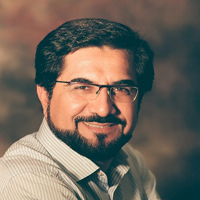A comparative study of the intellectual foundations of architecture in the unconscious and self-conscious process (case of study: comparison of Safavid and contemporary architecture)
The modern architect places a lot of weight on his status as an artist and heavily relies on changes like unique and self-aware language. Different intellectual foundations are effective in the production of form in architectural studies, which can be categorized in many areas, including conscious and unconscious. The researcher is attempting to determine how much the conscious mind and how much the unconscious contributed to the production of form during the contemporary era and the Safavid era, respectively. Two historical-comparative and documentary guidelines served as the foundation for this research, which was carried out using a qualitative approach. The study environment consists of documents that discuss the conceptual foundations of both the Safavid and contemporary eras. Based on the votes provided during both eras, it is important to consider the relationship between form production and creativity. As a result, a comparison was done using this index and the variables that affect it. Intellectual and artistic creativity has an unconscious nature, while scientific and logical creativity has a conscious nature. The comparative findings demonstrated that in Safavid architecture, the artist himself is transformed and finds new creativity throughout the creation of his works of art. To guide the soul in its substantial motion and to build a suitable platform for the realization of its transcendental powers, or, in other words, to lay the foundation for the immateriality of the soul, is the responsibility of the artist in the reciprocal relationship with his created product. The science of rational man is a sensual science. The Safavid era had rich and powerful intellectual roots in the unconscious process, which had an impact on the production of forms in architecture. Sacred art, in contrast to modern art, places meaning before style. Author architects discuss the phenomenon as a whole, as well as the contradictions between context and flexibility. From their perspective, however, the audience of the work is what matters since they bring the text to life, not the architect who merely recreates reality. They discuss intuition, existential experiences, and the unity of human nature. However, there is no information available regarding the nature of this encounter, the identification of the existential reality, or the advancement of it in the direction of a singular nature. Given the volume of information available to him, the architect must prioritize what can be resolved in his mind. Additionally, Eisenman believes that this individual expression occasionally promotes isolationist inventiveness without consideration for a unified order. Based on these foundations and their analysis, it is possible to conclude that it is urgently necessary to use the unconscious process in the creation of form in order to enhance the quality of the design and make it appropriate for the environment. This can be accomplished without placing the shape in its actual context by taking into consideration the inconsistencies since the architect's capacity to fully and completely comprehend the values and concepts in the universe and connect to the subconscious is constrained. Contextual construction compatibility is the result.
- حق عضویت دریافتی صرف حمایت از نشریات عضو و نگهداری، تکمیل و توسعه مگیران میشود.
- پرداخت حق اشتراک و دانلود مقالات اجازه بازنشر آن در سایر رسانههای چاپی و دیجیتال را به کاربر نمیدهد.


